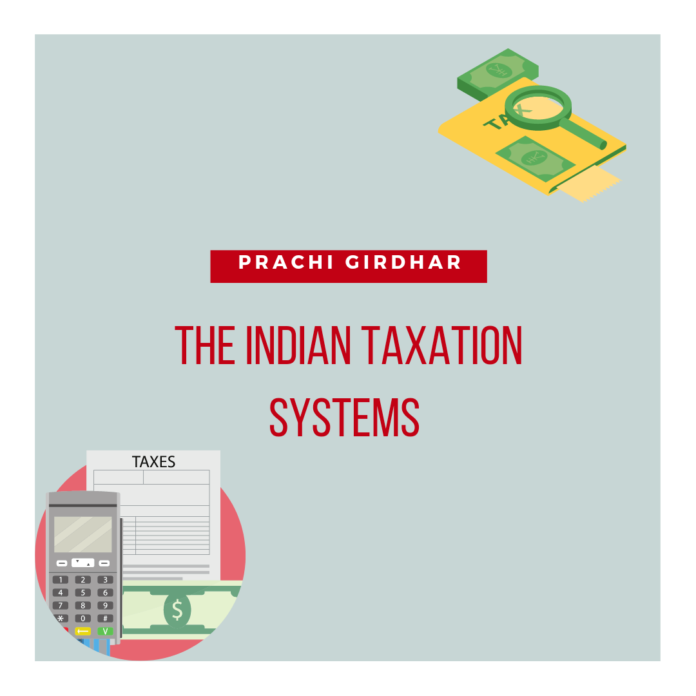Taxation is necessary for the functioning of a society with a government. Without it, the entire administration of a country can collapse. A tax is simply a sum of money that a government imposes on taxpayers of the country. The taxpayer’s money gets used to fulfil numerous public expenditures.
In India, the tax is imposed primarily by three authorities, the Central Government, the State Government, and other Local Bodies. Further, one can classify two types of tax systems in India the Direct Tax and Indirect Tax.
1st July 2017 onwards, a new and better tax system got introduced into the Indian administration structure. The revised tax system is known as the Goods and services tax, or the GST. In the budget speech of 2006, the foundation of GST was first laid. However, it was only in the year 2017 that GST came to force.
What is GST?
GST stands for Goods and services tax. It is an indirect form of the tax system that replaces many other indirect taxes such as VAT, services tax, et cetera. However, the GST is not as simple as it appears to be. One can understand this complex tax system through an example.
For instance, a manufacturer of shoes wants to import raw material from another state or country. According to the old tax system, he will have to pay several taxes such as Customs duty plus supply charges, VAT, Octroi, Service tax et cetera. The old tax system made it extremely difficult to begin independent startups. However, with the GST the scope of individual taxes is erased.
With the coming of GST, if somebody wants to buy or sell goods and services intra-state then, the person needs to pay Central Goods and Services Tax (CGST) plus State Goods and Services Tax (SGST). The Central Government collects the CGST. While the State Government collects the SGST. In Inter-state, the Integrated GST is levied. It is then equally divided among the two states (IGST).
History of GST
The journey of GST in India is long and remarkable. The initiative began in 2000 by the Vajpayee government. A committee was formed to initiate the GST reform. Asim Dasgupta was the head of this committee.
The Kelkar Task Force in 2003 suggested that GST be brought up in India. Following this, in the budget 2006-2007, the GST proposal was introduced. In 2008, the Empowered committee reviewed the GST policy. In April 2011, the Finance Minister spoke about the GST in his speech. In 2013, a report on GST was submitted by the Standing Committee.
In 2014, the Finance Minister introduced the GST bill in Lok Sabha. The Rajya Sabha passed the GST on 3rd August 2016, and Assam became the first state in the India region using the GST. The government proposed to implement GST across India from 1st July 2017.
Why GST?
The GST is specifically beneficial for various people who want to initiate their startups. It was introduced to eliminate around 16 different types of taxes that were levied earlier by various authorities. The driving force behind GST was the One Nation, One Tax System.
With GST, the final cost of goods and services gets reduced, and it prevents inflammation. The GST has also proved beneficial for small startups. Therefore, small businesses with an annual turnover of 51,13,365.04 INR now only have to pay 6% GST instead of 18% GST. The GST was also implemented to eradicate corruption and form a uniform tax system throughout the country. By replacing several indirect taxes, GST aims to increase the GDP of our country.
At present, the GST is used by almost 160 counties. Some of the countries that use this tax system are Canada, Vietnam, Australia, Singapore, United Kingdom, Monaco, Spain, Italy, Nigeria, Brazil, South Korea, and India.
The Impact of GST
The manufacturing industry of India has grown significantly with the coming of GST. It is so because GST has facilitated the whole process of manufacturing, and many startups don’t have to pay multiple taxes. With GST, the process has become significantly smooth and easy.
The GST reform has also helped the Make in India initiative since many foreign investors are now interested in starting their business in India.
Further GST reform has helped the medical sector of India. By simplifying the tax system and absolving multiple taxes, medical and health care now is more accessible and affordable.
Global Impact
Around 149 countries have GST. However, the GST rates in various countries differ. In some of the nations, the GST is better known as Value Added Tax (VAT). According to a survey, more than seven million business enterprises have registered themselves under GST. The GST was adopted by several countries for an organized and better economy. However, GST has also resulted in high-cost living, inflation, and instability in the economy in many countries. GST has resulted in an expansion of domestic and international trade.
Impact of GST in India
In the Indian Economy, the GST has been a revolutionary reform so far. The GST was introduced to create a free space for the movement of goods and services. It had reduced the cost of manufacturing and production. As a result, increased and healthy competition is present in domestic and international markets. Tax payment and tax-related services are now also uncomplicated. Citizens can easily register for a GST number and use other tax-related services via an online mode that is also very efficient. The GST has brought transparency to the Indian administration. It was introduced to improve the GDP of our country.
Pros of GST
GST has enabled one nation, one tax system.
It regulated unorganized sector,
It is easy to operate via online modes,
It eliminates several other taxes,
It is beneficial for startups and business enterprises, and
GST keeps a check on corruption and tax frauds.
Cons of GST
In some sectors, it has created inflation,
Small and medium enterprises are burdened due to GST, and
Software expenses have increased.
Challenges
GST was a crucial change and reform in the Indian Tax system. It impacted a middle-class household to an affluent businessman. In India, the reconciliation in GST is a major challenge. Products such as petroleum and electricity are exempted from GST.
However, there is no official record of the revenue collected via luxury tax, octroi, service tax, et cetera. Since GST is very recent in India, individuals are still struggling to get a comprehensive understanding of it. On top of all this, there is no such efficient helpline available for the taxpayers to resolve their issues and make the cumbersome process of filing GST easy.
Items exempted from GST
Healthcare
Educational Services
Cereal grains like wheat and oats
Salt
Children’s books and Sanitary napkins supplies are among products that come under the 0% GST tax slab. Petrol and diesel are also Non-GST supplies. It means that the government does not charge GST on the above-listed items.
Luxurious items such as Air conditioners, cars, et cetera come with the highest tax slab that is, 28% GST in India.
Conclusion
The Good and Services Tax is a critical and crucial reform in the Indian Tax system and economy ever since its independence. It came into effect from 1st July 2017.
It has simplified the otherwise complex tax system. GST is primarily about one nation one tax system. With GST reform, there has been greater freedom in the movement of goods and services in the domestic and international markets.
The GST reform aimed to increase the country’s GDP by 2%. The tax procedures are now uncomplicated as taxpayers can utilize the government’s online services via the online portal www.gst.gov.in.
It has increased the tax base and introduced greater transparency in the Indian tax system.
Though, there are some cons and challenges that need to be overcome in the long run. At present, the GST is implemented by almost 160 countries that make it the most efficient tax system.










